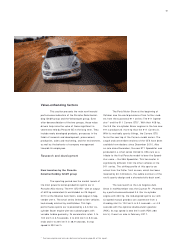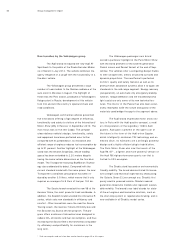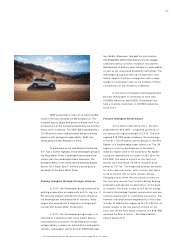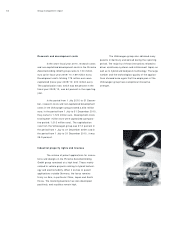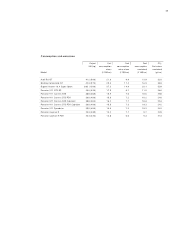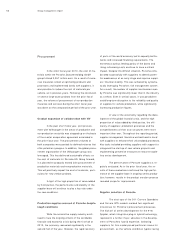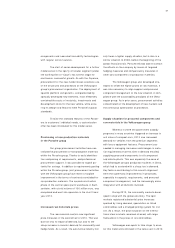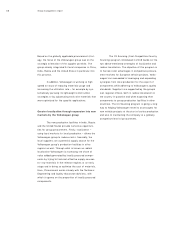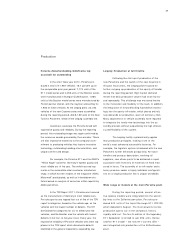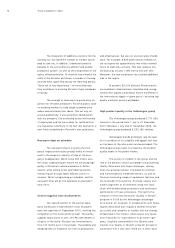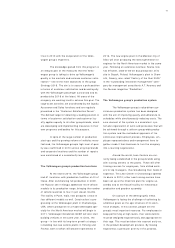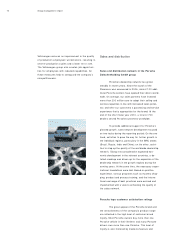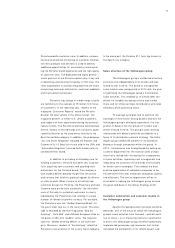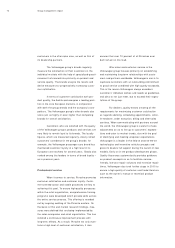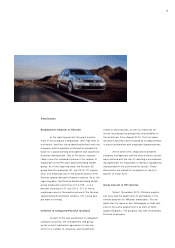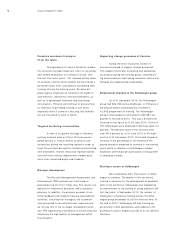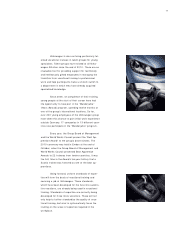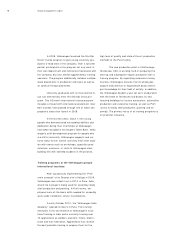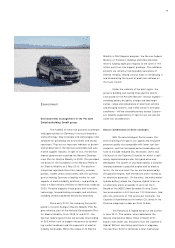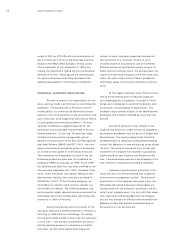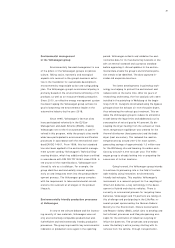Porsche 2010 Annual Report Download - page 73
Download and view the complete annual report
Please find page 73 of the 2010 Porsche annual report below. You can navigate through the pages in the report by either clicking on the pages listed below, or by using the keyword search tool below to find specific information within the annual report.Das Unternehmen
tries in 2010 with the cooperation of the Volks-
wagen group’s importers.
The knowledge gained from this program is
an integral part of the measures that the Volks-
wagen group is taking to drive up Volkswagen’s
quality in the markets and increase customer satis-
faction – one of the main objectives of the group
Strategy 2018. The aim is to secure a pole position
in terms of customer satisfaction and brand loyalty
with the Volkswagen passenger cars brand and its
products by 2018 at the latest. All areas of the
company are working hard to achieve this goal. The
large-scale activities are coordinated by the Quality
Assurance and Sales functions and are regularly
presented in the “Customer Satisfaction Forum”.
The defined target of obtaining a leading position in
terms of customer satisfaction and customer loy-
alty applies equally to all other group brands, which
are developing and implementing measures in their
own programs and bodies for this purpose.
In spite of the large number of production
start-ups and the growing volume of vehicles manu-
factured, the Volkswagen group’s high level of qual-
ity was reaffirmed in 2010 across all group brands
and corporate locations and the number of repairs
was maintained at a consistently low level.
The Volkswagen group’s production locations
At the end of 2010, the Volkswagen group
had 61 locations, with production facilities at 40 of
these. After commencing full production in 2009,
the Russian site in Kaluga added two more vehicle
models to its production range, bringing the number
of vehicle launches to four in just eleven months.
The facility in Pune, India, now produces a total of
four different models as well. Construction is pro-
gressing at the Volkswagen plant in Chattanooga,
USA, where production of a model developed spe-
cially for the North American market will begin in
2011. Volkswagen Osnabrück GmbH will also start
building vehicles in the same year. In China, the
group – in line with its long-term growth strategy –
is building two new vehicle plants in Yizheng and
Foshan, both of which will become operational in
2013. The new engine plant in the Mexican city of
Silao will start producing the latest generation of
engines for the North American market in the same
year. Following an extensive overhaul, Scania now
has efficient, state-of-the-art bus production at its
site in Slupsk, Poland. Volkswagen’s plant in Chem-
nitz, Saxony, was rated “Factory of the Year 2009”
in the “outstanding innovation management” cate-
gory by management consultants A.T. Kearney and
the German magazine “Produktion”.
The Volkswagen group’s production system
The Volkswagen group’s value-driven syn-
chronous production system has been designed
with the aim of improving quality and adherence to
schedules while simultaneously reducing costs. The
core element of the system is a consistent, sys-
tematic organization of work and processes that will
be achieved through a uniform group-wide produc-
tion system and the methodical approach of the
continuous improvement process. Employees, em-
ployee representatives and management have to-
gether made it their business to turn the company
into a learning organization.
Around the world, Lean Centers are cur-
rently being established in the group brands along
with training centers at the plants. These will offer
training courses for employees, from skilled work-
ers to top managers, thus broadening their fields of
expertise. The Lean Center in Chattanooga opened
its doors in 2010; other new training centers have
been set up at the Chemnitz plant for engine as-
sembly and at the Kassel facility for mechanical
production and gearbox assembly.
On account of the demographic trend,
Volkswagen is facing the challenge of achieving its
ambitious goals as the age structure of its work-
force changes. In this context, people are the
group’s most important resource. For employees to
keep performing at high levels, their workstations
must be designed ergonomically and appropriate to
their age. This must be taken into account early on,
in the product development process. By making
ergonomics a particular priority in this process,
71


